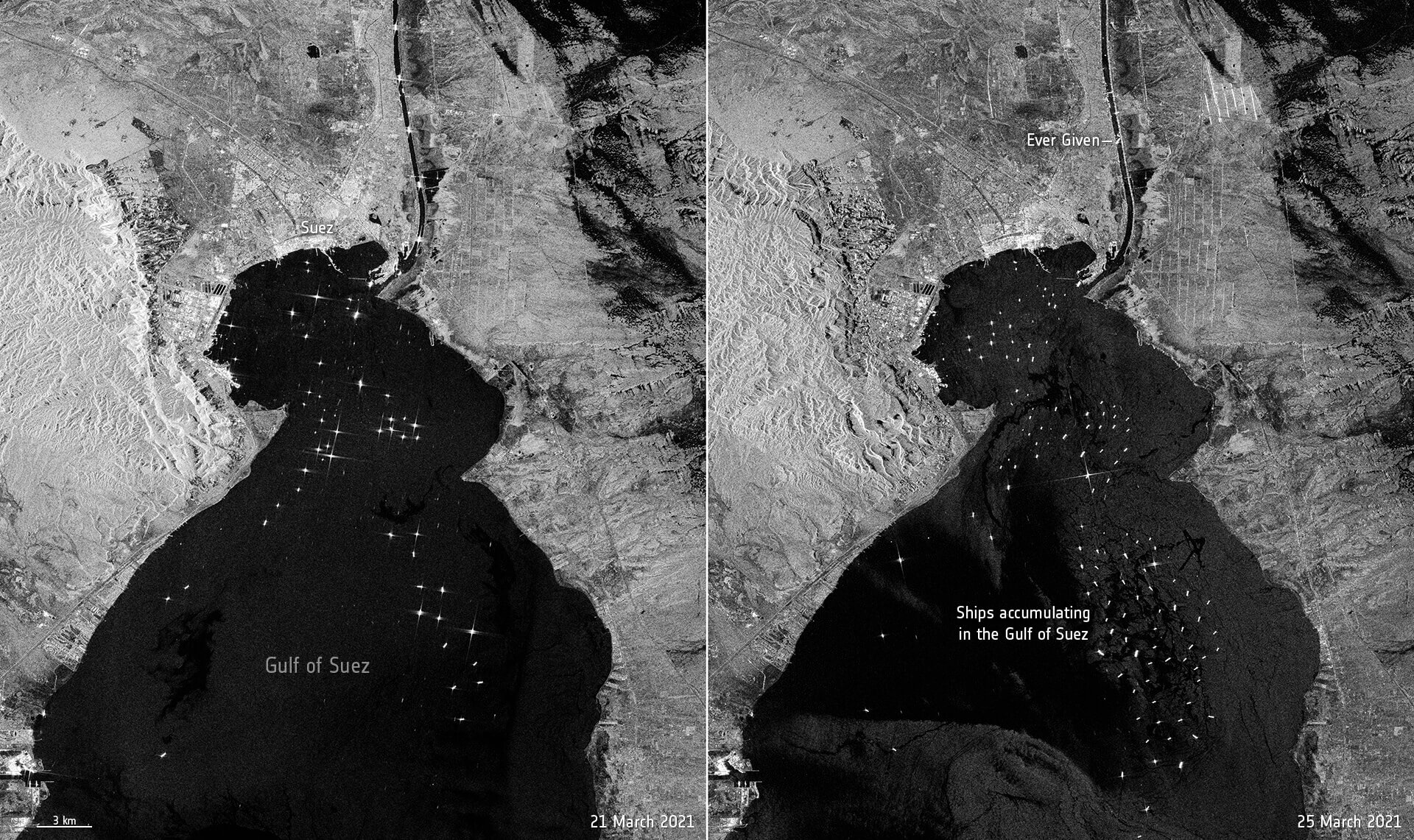
The huge container ship stranded in the Suez Canal in Egypt, is seen in new photos taken by by the European Space Agency’s Copernicus Sentinel-1 mission
The huge container ship stranded in the Suez Canal in Egypt, is seen in new photos taken by by the European Space Agency’s Copernicus Sentinel-1 mission.
The Ever Given, a container ship equal in height to almost every Empire State building, ran aground in the Egyptian Canal after being trapped in a sandstorm accompanied by winds that caused low visibility and poor navigation. The incident occurred on March 23 on her trip from China to the Netherlands. The photo on the left, taken on March 21, shows routine sea traffic in the canal with ships at intervals of 2 to 3 km in the canal. The photo on the right, taken on March 25, shows the 400-meter-long ship blocking the canal.
The Suez Canal connects Port Said on the shores of the Mediterranean to the Indian Ocean through the Egyptian city of Suez and the Red Sea. The blockage is hindering hundreds of tankers and ships from reaching their destination, and maritime traffic is still accumulating and many ships are waiting in the Gulf of Suez.
Tugboats attempt to displace the 200,000-tonne ship, aided by two excavators, nine tugboats and four bulldozers on the bank of the canal. The goal is to remove from the canal bank between 15,000 and 20,000 cubic meters of sand to reach a depth of 12 to 16 meters and thus release the ship.
The two identical Copernicus Sentinel-1 satellites carry radar devices to provide photographs of the earth in all weathers, day and night, making them ideal for monitoring ship movement.
The sea surface reflects the radar signal away from the satellite, making the water appear dark in the image. This is in contrast to the metal self, in this case the ships in the bay, which look like bright spots in the dark water.
The damage done amounts to billions of dollars a day, and has affected the prices of many goods, and some of the stranded ships, at least those known in Western Europe, may be forced to tow around Africa.
More on the subject on the Knowledge website: